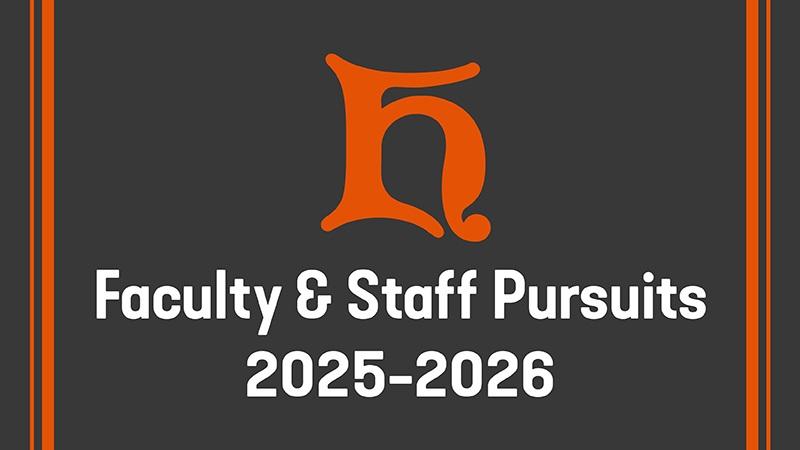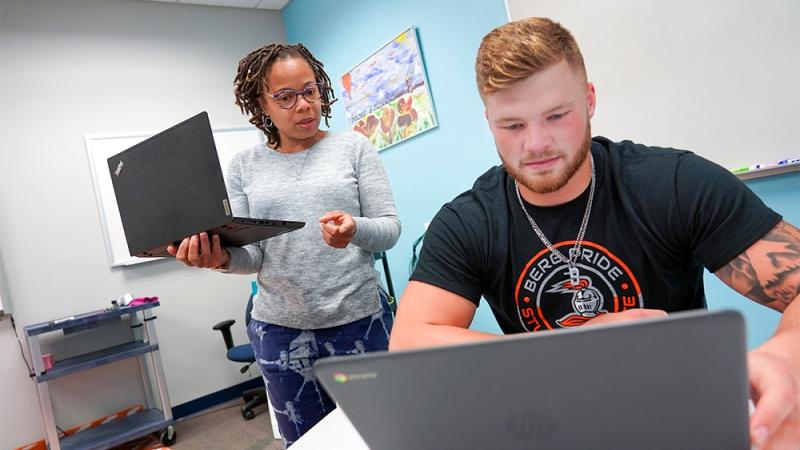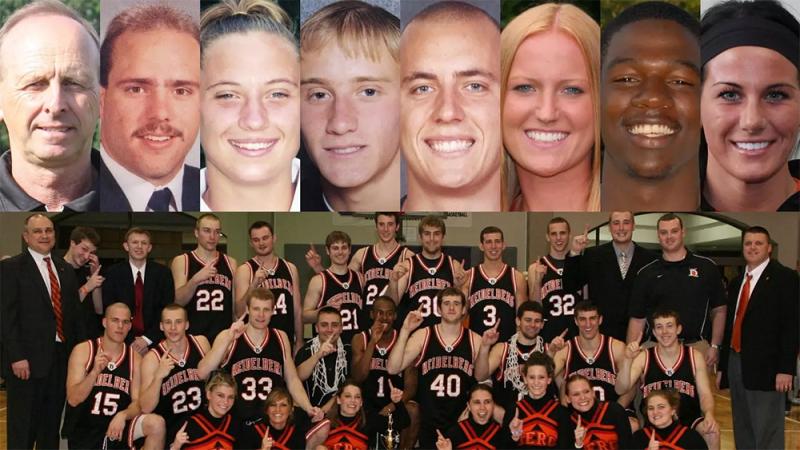Alum doc experiences COVID-19 from both sides
Early in the COVID-19 pandemic, Dr. David Mallory, ’77, and his family practice colleagues were receiving daily updates about how to manage the situation, steps they should be prepared to take and new protocols if it arrived in the Toledo area, where he has practiced for 33 years.
Little did he know it would become very personal, even frightening – as a frontline healthcare provider and a patient.
“If someone came in, they’d be asked questions at the door … Have you been in China? Have you been on a cruise ship? We tried to screen them as they showed up,” he explains.
“There were no cases that I was aware of at that time … but we were prepared.”
In early March, Dave was doing a recheck on one of his patients who had recently been to an Urgent Care. The patient had minimal non-specific symptoms. The next few days would change things, however.
"That was the last patient I saw that day and the patient reported that they were improving. Everything seemed good," he says. "I saw patients for two more days, and things remained uneventful into that weekend. Then I learned that the patient had been admitted to the hospital for an unrelated reason. A short time later, the patient's respiratory status worsened."
As it turned out, the patient had recently visited someone out of state who ended up testing positive for COVID-19 and was now being tested for COVID as well. "I had been exposed and we needed to take immediate action" he said.
He stopped seeing patients and intense contact tracing began. He planned to quarantine himself for 14 days before returning to work, but then a short time later developed a cough, body aches and lost his sense of smell. "I notified the COVID hotline, but at that point, access to out-patient testing was limited and my symptoms were determined not to be severe enough to warrant testing. Two days later I started to feel worse and became short of breath while taking a nigh- time walk. Testing was arranged the next day and when the test came back positive, I notified my partners and health system. Our whole office was closed and everyone was quarantined for 14 days. Luckily no one else got sick."
About a week after his initial symptoms, he felt terrible. With a temperature now at 101.5, shortness of breath and pressure in his chest, Dave and his wife, Pat (McGuire), ’79, knew it was time to go to the hospital.
Pat had to leave Dave at the hospital, per the no-visitors rule. What followed for Dave was the isolation so often described in news reports about patients hospitalized with COVID-19.
“I was put in an isolation room. Most of the time the doctors didn’t come in and see me. They talked to me on the phone,” he recalls. “The isolation … it’s depressing. It’s scary.”
Dave was ultimately diagnosed with double pneumonia. Along with his doctors, he made the decision to be treated with plaquenil (hydroxychloroquine) and antibiotics – a risky treatment that might help. But it was the only available option. His symptoms stabilized and he was released to recuperate at home.
“I dodged a bullet,” Dave says. “I really thought I might die. I thought I might be on a ventilator and I might not make it off.”
Over the past couple of months, his strength is gradually returning and he has resumed seeing patients full time. “Things are going OK,” he says.
The one symptom that has persisted is his loss of taste and smell. But last week, as Pat was preparing barbecued wings, he could smell vinegar. So he’s optimistic those senses will eventually return.
While he was hospitalized, Dave’s phone died. When recharged, he found 100-plus texts from friends and family – a lot from Heidelberg friends and classmates – that lifted his spirits tremendously.
Soon after his diagnosis and continuing after he returned home from the hospital, Dave became the face of COVID-19 in his Toledo community, agreeing to share his story with the local media. He hopes that has had a positive impact. (Here’s one story from WTOL in Toledo.)
“A lot of the people I’ve talked to were concerned, but they said they weren’t taking this seriously until I tell them my story,” Dave says. “I want to help the community understand we’ve got to take this seriously. I urge them to take the proper precautions.”
Dave has since tested negative for COVID-19. As a recovered patient, he has decided to donate his plasma, which has shown promise as a potential treatment. He’s embraced the role of a pioneer.
“We’re moving onward. On the other side of this, I want to try to make a difference,” he says. “I think it’s important to try to have hope and work toward a solution. I just hope people will make the right choices because it’s ridiculous to think this is going to go away.”
As a physician and a survivor, Dave can speak with a high level of authority and serve as a resource in his community. In that role, he encourages social distancing and other recommended measures to prevent the virus from spreading.
“The best way to stop it is to do all of the preventative things. But with no treatment, the key is going to be a good vaccine.”




